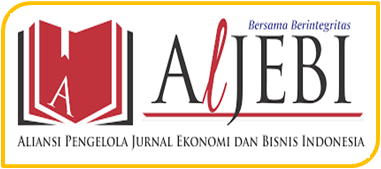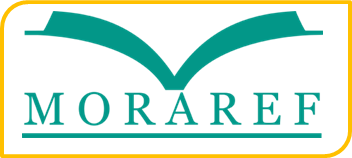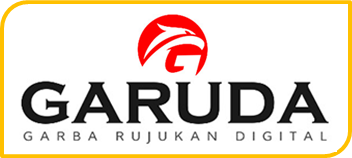Comparative Analysis of Sharia Stock Screening Methods in Indonesia, Malaysia, and the United States
Abstract
This study aims to find out and understand how the sharia stock screening model applies in Indonesia, Malaysia, and the United States and find a harmonization solution. The method used in this study is descriptive-qualitative through a literature study approach. Research data was obtained from various sources both online and offline, such as journal articles, books, and websites related to the screening of Sharia-compliant stocks, to be further analyzed using the content analysis method. The results show that there are differences in the screening criteria for sharia stocks on the Indonesian Stock Exchange, the Malaysian Stock Exchange, and the American Stock Exchange, both qualitatively and quantitatively. This difference is seen as a natural thing in Islamic teachings because it is in the realm of muamalah fiqh, which of course is adapted to the conditions of the people of each country. However, it is necessary to consider generalizing the implementation of strict and uniform sharia stock screening in order to increase understanding, interaction, and economic cooperation among Muslim countries at the global level.
Keywords
Full Text:
PDFReferences
Abbes, M. B. (2012). Risk and return of islamic and conventional indices. International Journal of Euro-Mediterranean Studies, 5(1), 1–23. https://doi.org/10.1007/s40321-012-0001-9
Adam, N. L., & Bakar, N. A. (2014). Shariah Screening Process in Malaysia. Procedia - Social and Behavioral Sciences, 121(September 2012), 113–123. https://doi.org/10.1016/j.sbspro.2014.01.1113
Ahmad Rodoni, A. H. (2008). Lembaga keuangan syariah. Jakarta : Zikrul Hakim.
Ardiansyah, M., Qizam, I., & Qoyum, A. (2017). Telaah kritis model screening saham syariah menuju pasar tunggal ASEAN. IJTIHAD Jurnal Wacana Hukum Islam Dan Kemanusiaan, 16(2), 197. https://doi.org/10.18326/ijtihad.v16i2.197-216
Ayedh, A. M. A., Kamaruddin, M. I. H., & Shaharuddin, A. (2020). Challenging the Current Shariah Screening Methodology Assessments in Kuala Lumpur Shariah Index (KLSI). International Journal of Academic Research in Accounting, Finance and Management Sciences, 9(4), 253–268. https://doi.org/10.6007/ijarafms/v9-i4/6844
Balgis, P. D., Fitrijanti, T., & Sukmadilaga, C. (2021). Perbedaan Penerapan Standar Islamic Stock Screening Dan Social Environment Index Terhadap Kinerja Portofolio Saham Bei. Apssai Accounting Review, 1(1), 1–19. https://doi.org/10.26418/apssai.v1i1.7
Derigs, U. and Marzban, S. (2008). Review and analysis of current Shariah‐compliant equity screening practices. International Journal of Islamic and Middle Eastern Finance and Management, 1(4), 285–303.
Fauzani, F. (2021). Screening Saham Syariah Dan Implementasinya Terhadap Pengungkapan Tanggung Jawab Sosial ( Studi Perusahaan pada Daftar Efek Syariah ) Disertasi Diajukan kepada Sekolah Pascasarjana UIN Syarif Hidayatullah Jakarta sebagai Salah Satu Syarat untuk Memperoleh. Universitas Islam Negeri Syarif Hidayatullah Jakarta.
Fielnanda, R. (2017). Konsep Screening Saham Syariah di Indonesia. AL-FALAH : Journal of Islamic Economics, 2(2). https://doi.org/10.29240/jie.v2i2.255
Firmansyah, E. A. (2017). Seleksi Saham Syariah : Perbandingan Antara Bursa Efek Indonesia Dan Malaysia. Jurnal Inspirasi Bisnis Dan Manajemen, 1(1), 1. https://doi.org/10.33603/jibm.v1i1.480
Gamaleldin, F. M. (2015). Shariah-Compliant Stocks Screening and Purification. University of Liverpool, United Kingdom.
Hanafi, S. M. (2011). Perbandingan Kriteria Syari’ah Pada Indeks Saham Syari’ah Indonesia, Malaysia, dan Dow Jones. Asy-Syir’ah: Jurnal Ilmu Syari’ah Dan Hukum, 45(Jili-Desember), 1405–1430. http://lib.uin-malang.ac.id/?mod=th_detail&id=04610079
Hussein, K. a. (2005). Islamic Investment : Evidence From Dow Jones. 6th International Conference on Islamic Banking and Finance, November 21-24, Jakarta, Indonesia, 1–14.
Joly, C. (1993). FOCUS: Ethical Demands and Requirements in Investment Management. Business Ethics: A European Review, 2(4), 199–212. https://doi.org/10.1111/j.1467-8608.1993.tb00046.x
Kamso, N. (2013). Investing in Islamic funds: a practitioner’s perspective. Wiley.
Khanfar, I. A. A., & Khanfar, N. A. A. (2023). Islamic Sukuk and Its Role in Economic Recovery and Growth Post-Covid. In Studies in Systems, Decision and Control (Vol. 216, pp. 299–310). Springer Science and Business Media Deutschland GmbH. https://doi.org/10.1007/978-3-031-10212-7_26
Mian, K. M. A. (2008). Shariah Screening and Islamic Equity Indices. EUREKAHEDGE PTE LTD.
Najib, nur hamizah, Hamid, iffah raihan, Nasarudin, seri nadhirah, & Saiti, B. (2014). The Comparison Of Shariah Screening Methodology For Stocks Between Malaysia Security Commission Criteria And Dow Jones Method : A Critical Assessment Corresponding Author : Dr Buerhan Saiti , Universiti Kuala Lumpur Business School Email Address : Buerhan. December.
Obaidullah, M. (2005). IslamicFinancialServices (p. 282).
Pok, W. C. (2012). Analysis of Syariah quantitative screening norms among Malaysia Syariah-compliant stocks. Investment Management and Financial Innovations, 9(2), 69–80.
Rahman, S. (2015). Ethical Investment in Stock Screening and Zakat on Stocks. Journal of Islamic Finance, 4(1), 39–62. https://doi.org/10.12816/0024800
Ramadani, L. A., & Aziz, A. A. (2018). Telaah Perbandingan Model Bussines Screening dan Financial Screening Indeks Saham Syariah Global. Iqtishoduna: Jurnal Ekonomi Dan Keuangan Islam, 9(1), 1–15.
Salahuddin, A., & Hermansyah, A. (2014). Assessing the Efficiency of Jakarta Islamic Index-Linked Investing. Indonesian Capital Market Review, 4(2). https://doi.org/10.21002/icmr.v4i2.3616
Sani, N. A., & Othman, R. (2013). Revision Of Shari ’ Ah Screening Methodology : The Status Of Shari ’ Ah Compliant Companies In Malaysia Noridayu Abdullah Sani Professor Dr Rohana Othman. June 2013, 51–63.
Siddiqui, R. (2004). Islamic Indexes: the DJIM Framework. In S. Jaffer (Ed.), Islamic Asset Management. Euromoiney Books.
Siddiqui, R. (2007). Shari`ah Compliance, Performance, and Conversion: The Case of the Dow Jones Islamic Market IndexSM. Chicago Journal of International Law, 7(2), 8.
Soke Fun Ho, C., Masood, O., Abdul Rehman, A., & Bellalah, M. (2012). Syariah accounting and compliant screening practices. Qualitative Research in Financial Markets, 4(2–3), 240–254. https://doi.org/10.1108/17554171211252556
Tanin, T. I., Ahmad, A. U. F., & Muneeza, A. (2021). Shariah-compliant equities and Shariah screening: need for convergence of ethical screening of stocks with Shariah screening. International Journal of Emerging Markets. https://doi.org/10.1108/IJOEM-09-2020-1041
Wilson, R. (1997). Islamic finance and ethical investment. International Journal of Social Economics, 24(11), 1325–1342. https://doi.org/10.1108/03068299710193624
Yildirim, Ramazan and Ilhan, B. (2018). Munich Personal RePEc Archive Shari ’ ah Screening Methodology- New Shari ’ ah Compliant Approach Shari ’ ah Screening Methodology - New Shari ’ ah Compliant Approach *. Munich Personal RePEc Archive, 90277, 24. https://mpra.ub.uni-muenchen.de/90277/
Zainudin, N. B., Miskam, S. B., & Sulaiman, M. B. (2016). Revised Shariah Screening Methodology for Shariah-Compliant Securities : New ... Conference on Management and Muamalah, 1(May 2014), 1–11.
Zandi, G., Razak, D. A., & Hussin, N. H. (2014). Stock market screening: An analogical study on conventional and shariah-compliant stock markets. Asian Social Science, 10(22), 270–279. https://doi.org/10.5539/ass.v10n22p270
DOI: https://doi.org/10.18860/miec.v3i1.19808
Refbacks
- There are currently no refbacks.

This work is licensed under a Creative Commons Attribution-ShareAlike 4.0 International License.
Editorial Office:
Megawati Soekarnoputri Building
Faculty of Economics
Jln. Gajayana 50 Telp (0341) 558881
E-mail: m-iecjournal@uin-malang.ac.id
UIN Maulana Malik Ibrahim Malang
Member of:
Indexed by:
Maliki Islamic Economics Journal under a CC BY SA 4.0 International License.
View My Stats

























